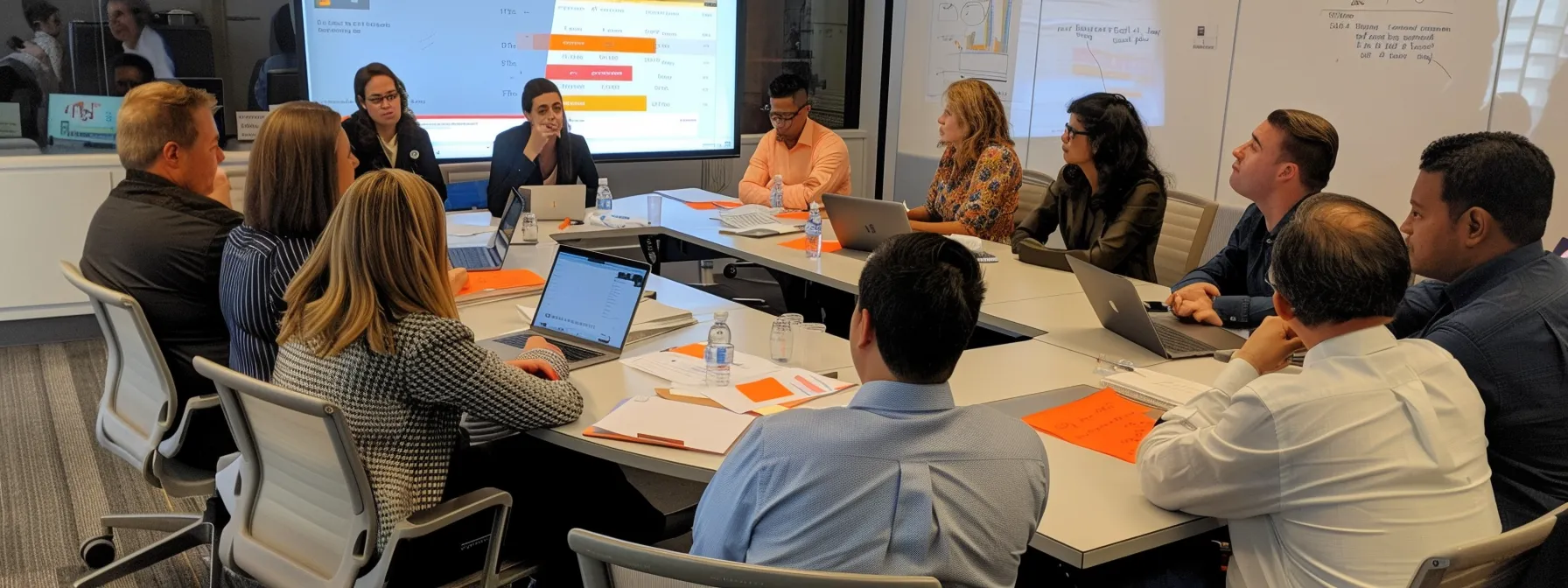PGI
Mastering the Art of Effective Decision Making in Leadership
Effective decision making is a crucial skill that leaders often struggle with. Research shows that leaders can be swayed by cognitive bias, which impacts their understanding of problems and stakeholder needs. This article will explore core principles of effective decision making, enhance critical thinking skills, and offer practical decision-making tools. By engaging with this content, readers will gain valuable knowledge that can lead to better choices in their leadership roles and help overcome common decision-making challenges.
Key Takeaways
- Effective decision-making significantly impacts organizational success and team engagement
- Leaders must recognize emotional influences to enhance judgment and promote team collaboration
- Incorporating diverse perspectives fosters a culture of informed decision-making and innovation
- Clear communication and action plans are essential for successful leadership implementation
- Continuous improvement empowers teams and enhances decision quality within the organization
Understanding the Impact of Decision Making on Leadership Success

Effective decision making in leadership significantly impacts an organization’s overall success. By recognizing the leader’s pivotal role in organizational decisions, leaders can link decision quality to team performance, fostering innovation with thinking into results. Additionally, identifying common obstacles, including stress and emotion, helps in navigating challenges. Lastly, assessing the long-term effects of leadership choices matters greatly for sustainable growth and development.
Recognizing the Leader’s Role in Organizational Decisions
Leaders play a crucial role in shaping organizational decisions, as their mindset significantly influences the direction of the team. By maintaining a focus on rationality and informed judgment, leaders can foster a culture of sound decision-making that prioritizes the well-being of employees and the organization. Such an approach not only encourages a collaborative environment but also empowers individuals to contribute effectively to shared goals.
The impact of a leader’s choices extends beyond immediate results; it shapes the future landscape of the organization. When leaders utilize their expertise to make strategic decisions, they create a framework that supports sustainable employment and nurtures talent. This long-term vision enhances team dynamics and cultivates trust, leading to increased productivity and innovation.
Furthermore, effective decision-making requires keen awareness of the emotional and psychological factors that can obstruct rational thought. Leaders must be equipped to identify these challenges and develop strategies to address them. By enhancing their capacity to navigate the complexities of the mind, leaders can foster resilience and adaptability within their teams, ultimately driving success and growth in the organization.
Linking Decision Quality to Team Performance
The quality of decisions made by leaders is directly linked to team performance, shaping both strategy and motivation within the organization. When leaders exhibit courage in their decision-making, they set a strong example for their teams. This environment encourages team members to engage actively, fostering a sense of ownership and responsibility toward shared goals.
Moreover, ethical decision-making plays a crucial role in enhancing team cohesion and trust. Leaders who prioritize ethics create a transparent atmosphere where team members feel valued and respected. This foundation of trust not only boosts morale but also enhances overall productivity, as employees are more inclined to collaborate effectively when they know their contributions matter.
Additionally, understanding factors like neuroticism is important in decision-making processes. Leaders should be aware that team members with higher neuroticism may struggle with stress and motivation. By recognizing these traits, leaders can tailor their strategies to ensure that they support these individuals, ultimately leading to better team performance and a healthier work environment.
Identifying Common Obstacles in Leadership Decisions
Leaders often encounter obstacles that hinder effective decision-making, with one significant challenge being confirmation bias. This tendency to favor information that supports existing beliefs can limit a leader’s perspective, preventing them from considering alternative options. By recognizing this bias, leaders can implement strategies to seek diverse opinions and promote an environment of trust, fostering better decision outcomes.
Another obstacle is the reliance on rigid policies that may not allow for flexibility in decision-making. Contingency theory suggests that leaders should be adaptable, tailoring their approaches based on the specific situation at hand. When leaders become too attached to predetermined policies, they risk missing opportunities for innovation and growth within their organizations.
Emotional influences can also obstruct sound decision-making. Leaders must be aware of their emotions and the potential impact of stress on their judgment. Addressing these emotional challenges, and fostering trust within their teams helps create a supportive atmosphere where team members feel comfortable sharing their opinions. This collaborative environment ultimately enhances the decision-making process, leading to more effective leadership outcomes.
Assessing the Long-Term Effects of Leadership Choices
Assessing the long-term effects of leadership choices is crucial for fostering an environment where creativity can thrive. Effective leaders utilize evidence from past decisions to evaluate their outcomes and draw insights for future strategies. This reflective process informs their approach to brainstorming new ideas, ensuring that innovations align with the organization‘s goals and values.
Leaders who prioritize this assessment often demonstrate a commitment to continuous improvement. By regularly reviewing the ramifications of their choices, they can identify patterns that either support or undermine team performance. This proactive stance enhances their ability to navigate complex challenges and inspires confidence in their leadership among team members.
Furthermore, long-term assessments enable leaders to nurture talent within their teams. By understanding how their decisions impact individual and collective growth, leaders can implement strategies that enhance professional development. This not only fosters a stronger, more resilient organization but also encourages employees to feel valued, ultimately leading to increased motivation and commitment to shared objectives.
Good leaders make choices. They know that to succeed, they must understand the core principles that guide effective decision making.
Core Principles of Effective Decision Making for Leaders

Effective decision-making in leadership hinges on several core principles. Leaders must focus on setting clear goals and objectives to guide their actions. Gathering comprehensive information and data aids in reducing uncertainty and informs choices. Weighing options and potential outcomes fosters a culture of collaboration. Involving team members in the decision process enhances buy-in while aligning decisions with organizational values and vision ensures coherence and minimizes the risk of failure. Each of these principles plays a crucial role in mastering the skill of decision-making.
Setting Clear Goals and Objectives
Setting clear goals and objectives is essential for effective decision making in leadership. Leaders who leverage their emotional intelligence can better understand the motivations and behaviors of their team members, making it easier to craft objectives that resonate with everyone involved. By aligning team objectives with the broader vision of the organization, leaders ensure that all actions contribute to a unified purpose, which minimizes procrastination and enhances productivity.
Utilizing data analytics plays a significant role in establishing clear goals. Leaders can analyze past performance metrics and current market trends to set measurable objectives that drive decision-making. This analytical approach not only clarifies priorities but also helps in tracking progress, ensuring that the organization remains focused on achieving its targets without losing sight of its core mission.
Furthermore, leaders must communicate their goals effectively to the team, fostering an environment where everyone is aware of their roles in achieving those objectives. By addressing potential obstacles and providing support, leaders can prevent behaviors that lead to procrastination. This proactive stance cultivates a sense of accountability within the organization, empowering team members to take ownership of their contributions toward meeting shared goals.
Gathering Comprehensive Information and Data
Gathering comprehensive information and data is fundamental for effective decision-making in leadership. Leaders need to create a systematic process for data collection that integrates various perspectives, including gender diversity, to minimize bias in decision outcomes. By fostering a culture that values diverse opinions and experiences, leaders can boost confidence in their choices, leading to more well-rounded solutions.
Utilizing a structured framework enables leaders to assess the reliability of the information collected. This approach helps combat confirmation bias, encouraging leaders to reason critically about the data. For example, leaders can implement surveys or analysis tools to gather insights on employee satisfaction and performance metrics, ensuring that their decisions are informed by comprehensive data rather than assumptions.
When leaders approach decision-making with data and insights, they empower their teams to contribute effectively. Acknowledging the need for a robust information system supports transparency and accountability within the organization. This practice not only improves the overall decision-making process but also enhances team dynamics, as stakeholders feel more engaged in shaping the direction of the organization:
- Create a systematic process for data collection to inform decisions.
- Incorporate diverse perspectives to minimize bias.
- Utilize structured frameworks to promote critical reasoning.
- Empower teams by sharing insights and highlights from the data.
- Foster transparency to enhance trust and engagement in decision-making.
Weighing Options and Potential Outcomes
Weighing options and potential outcomes is a critical component of effective decision making in leadership. Leaders must assess every decision through the lens of its impact on productivity and the organizational culture. For instance, taking the time to analyze how a proposed change in policy might affect employee morale can guide leaders in making choices that maintain a positive and motivating workplace atmosphere.
Empathy plays an essential role in this process, as leaders who consider the feelings and perspectives of their teams can make more informed decisions. By actively soliciting feedback and understanding how changes will affect employees, leaders can foster a supportive organizational culture that values collaboration. This approach not only enhances decision quality but also strengthens team cohesion, ultimately leading to improved results.
Furthermore, when leaders weigh their options, they should evaluate available resources against potential risks and benefits. This concept encourages leaders to think critically about their choices, focusing on sustainability and long-term success. By examining alternatives thoroughly, leaders can ensure their decisions align with both immediate needs and the overall vision of the organization:
- Evaluate the potential impact on productivity.
- Incorporate empathy for team members’ perspectives.
- Consider the effects on organizational culture.
- Assess available resources versus potential risks.
- Align decisions with the organization‘s vision.
Involving Team Members in the Decision Process
Involving team members in the decision process enhances engagement and fosters a collaborative environment. When leaders actively seek input from their teams, they not only reduce fear but also build trust. This participation encourages individuals to share their insights, which can lead to more effective negotiation and decision-making outcomes.
By integrating team members’ perspectives, leaders can leverage critical thinking and intuition. This diversity of thought helps in balancing potential risks and rewards associated with decisions. When employees feel that their opinions are valued, they are more likely to embrace the decisions made, leading to greater commitment and accountability.
Additionally, leaders should provide a structured approach to involve team members effectively. This can include brainstorming sessions, feedback loops, and decision-making workshops. By fostering an inclusive culture of risk management, organizations can not only enhance their decision-making processes but also empower employees to take an active role in shaping the direction of their workplace:
- Foster a culture of inclusion to reduce fear among team members.
- Encourage open negotiation to evaluate different viewpoints.
- Promote the use of critical thinking to assess potential outcomes.
- Incorporate intuition to guide decision-making processes.
- Implement risk management strategies to navigate uncertainties.
Aligning Decisions With Organizational Values and Vision
Aligning decisions with organizational values and vision is essential for effective leadership. This alignment ensures that every choice made reflects the core principles that guide the organization, enhancing overall cohesion and clarity in purpose. By incorporating behavioral economics into decision-making processes, leaders can understand how employees perceive these choices and how they may impact organizational commitment.
Training is crucial for leaders to enhance their ability to make decisions that reflect the organization‘s values. Through targeted workshops and skill development sessions, leaders can sharpen their logical reasoning skills, enabling them to analyze complex situations more effectively. This training equips them to navigate the intricacies of decision-making while maintaining a focus on what aligns best with the organization‘s overarching goals.
Furthermore, leaders must pay attention to the complexity of their environments when making decisions. Engaging in continuous assessment of how decisions align with the organization‘s vision allows leaders to adapt as necessary. By doing so, they create an organizational culture that not only prioritizes alignment with core values but also fosters trust and enhances employee engagement, motivating teams to work collectively towards shared objectives.
Decisions shape the course of a leader’s journey. To navigate this path, sharpening critical thinking skills becomes essential.
Enhancing Critical Thinking Skills in Leadership

Enhancing critical thinking skills in leadership is vital for effective decision-making. This section focuses on developing analytical approaches to problem-solving, helping leaders make informed judgments. It also addresses identifying and mitigating personal biases to foster a culture of intelligence and trust. Encouraging creative solutions and innovation is essential for managing risk, while practicing reflective thinking sharpens judgment. Each topic provides practical insights to refine leaders’ decision-making processes.
Developing Analytical Approaches to Problem-Solving
Developing analytical approaches to problem-solving is essential for leaders aiming to enhance their decision-making processes. By systematically breaking down complex issues into manageable components, leaders can evaluate each element more clearly. This method enables them to identify root causes and explore effective solutions that align with their organization‘s goals, ultimately leading to better outcomes.
A practical example of this approach is when leaders face challenges with team productivity. By analyzing specific workflow processes and gathering data, they can pinpoint bottlenecks and inefficiencies. This analytical perspective allows leaders to implement targeted changes that enhance overall performance and morale, reflecting their commitment to the team’s success.
Furthermore, leaders should embrace a culture of feedback and continuous improvement. Encouraging team members to voice their observations and suggestions fosters an analytical mindset throughout the organization. Such engagement not only leads to better problem-solving but also reinforces trust and collaboration among team members, solidifying the foundation for effective decision making. For more insights into refining leadership skills, visit the Heal2 Homepage.
Identifying and Mitigating Personal Biases
Identifying and mitigating personal biases is a crucial component of effective decision-making in leadership. Leaders often face challenges that arise from their own preconceived notions or experiences, which can cloud their judgment. By actively reflecting on their biases and recognizing how these may influence their decisions, leaders can create a more objective decision-making environment that aligns with their organization‘s goals.
To assist in this process, leaders can implement strategies such as seeking diverse perspectives and promoting open dialogue among team members. When leaders invite input from different voices within their organization, they gain valuable insights that challenge their assumptions. This collaboration not only enhances the quality of decisions made but also fosters an inclusive culture where team members feel valued and respected.
Additionally, continuous professional development is essential for leaders to refine their critical thinking skills. Engaging in training or workshops focused on recognizing bias helps leaders sharpen their awareness and cultivate an adaptive mindset. By investing in their growth, leaders can enhance their ability to mitigate biases, leading to more informed decisions that support both individual and organizational success.
Encouraging Creative Solutions and Innovation
Encouraging creative solutions and innovation is essential for leaders aiming to enhance their decision-making capabilities. By fostering an open environment where team members feel safe to share unconventional ideas, leaders can tap into a wealth of diverse perspectives that drive innovative solutions. This approach not only cultivates creativity but also empowers employees to actively participate in the decision-making process, leading to stronger commitment and engagement.
Leaders can implement brainstorming sessions and collaborative workshops to stimulate creative thinking among their teams. These settings provide a platform for free expression and idea-sharing, which can lead to breakthrough concepts and fresh strategies. By recognizing and valuing contributions from all team members, leaders demonstrate that every opinion matters, ultimately fostering a culture of innovation and shared responsibility.
Moreover, integrating feedback mechanisms is crucial in promoting continuous improvement and innovation. Leaders should encourage team members to reflect on previous decisions and outcomes, facilitating discussions on what could be improved or approached differently in the future. By consistently seeking input and being open to change, leaders can refine their decision-making processes and better align their strategies with the evolving needs of the organization.
Practicing Reflective Thinking for Better Judgment
Practicing reflective thinking is essential for leaders seeking better judgment in their decision-making process. By engaging in regular self-assessment, leaders can evaluate past decisions, analyzing what worked and what didn’t. This reflective practice allows leaders to gain insights from their experiences, ultimately informing future choices and enhancing their effectiveness.
Moreover, reflective thinking encourages leaders to consider the impact of their decisions on their teams and the organization as a whole. This consideration helps them understand the emotional and psychological responses of team members, fostering a supportive environment where constructive feedback is welcomed. By acknowledging these factors, leaders can not only improve their decision-making skills but also strengthen team cohesion and morale.
Additionally, leaders who incorporate reflective thinking into their routine can better identify potential biases that may cloud their judgment. By consciously recognizing and addressing these biases, they enhance their critical thinking capabilities and contribute to a culture of transparency within the organization. This transparency leads to more informed and objective decisions, ultimately driving the organization toward success.
Leaders must face choices every day, and the right tools can make the difference. In the next section, discover how decision-making techniques can sharpen clarity and improve outcomes.
Utilizing Decision-Making Tools and Techniques

Leaders can enhance their decision-making skills by utilizing various tools and techniques. This section covers applying SWOT analysis to identify strengths and weaknesses in leadership decisions, implementing decision matrices for making complex choices, leveraging scenario planning for future preparedness, using data analytics to inform decisions, and incorporating risk management strategies. Each tool offers practical insights that can significantly improve leadership effectiveness.
Applying SWOT Analysis to Leadership Decisions
Applying SWOT analysis in leadership decisions offers a structured approach to evaluate an organization‘s strengths, weaknesses, opportunities, and threats. By thoroughly assessing these elements, leaders gain valuable insights that inform strategic choices, ensuring that decisions align with the organization‘s long-term goals. This method encourages leaders to scrutinize internal capabilities alongside external market conditions, fostering a comprehensive understanding of the landscape in which they operate.
For instance, when a leader considers launching a new product, conducting a SWOT analysis can reveal strengths such as innovative technology or a loyal customer base. Simultaneously, it can highlight weaknesses, such as limited market reach or resource constraints. By identifying these factors, leaders are better positioned to leverage strengths while mitigating weaknesses, ultimately enhancing the effectiveness of their decision-making process.
Furthermore, incorporating SWOT analysis fosters collaboration within teams. Leaders can engage team members in discussing the various components, promoting a culture of shared insight and collective responsibility. This participatory approach not only enhances the decision-making process but also empowers employees, as they feel valued in contributing to the organization‘s direction and success. Ultimately, utilizing SWOT analysis equips leaders with the tools necessary for sound, informed decisions that drive organizational growth.
Implementing Decision Matrices for Complex Choices
Implementing decision matrices is a vital strategy for leaders confronted with complex choices. This structured tool allows leaders to evaluate multiple options against set criteria, making comparisons straightforward. By breaking down the decision into quantifiable components, leaders can visualize the potential impacts of each choice, enabling a clearer path to informed decisions.
For instance, when a leader considers different marketing strategies, a decision matrix can help assess each option based on cost, expected reach, and alignment with organizational goals. This method encourages leaders to prioritize their criteria, weighing the importance of each factor in relation to the overarching objectives of the organization. By using a decision matrix, leaders foster a more logical and methodical approach to decision-making that minimizes bias.
Incorporating decision matrices enhances team collaboration by providing a transparent framework for discussions. Team members can engage in the process, contributing insights to refine the criteria and evaluate options comprehensively. Ultimately, this practice not only boosts confidence in the chosen strategy but also cultivates a sense of ownership among team members regarding the decision outcomes.
- Define the decision to be made and identify criteria for evaluation.
- Create a matrix format to assess each option against established criteria.
- Encourage team involvement to gather diverse perspectives.
- Analyze the results to make informed choices aligned with organizational goals.
Leveraging Scenario Planning for Future Preparedness
Leveraging scenario planning is an essential strategy for leaders aiming to prepare for future uncertainties. This technique enables leaders to envision various potential developments in their industry and assess how each scenario could affect their organization. By systematically exploring different outcomes, leaders can identify risks and opportunities, helping them make informed decisions that ensure long-term success.
In practice, scenario planning involves gathering a diverse group of stakeholders to brainstorm possible future situations. This collaborative effort allows leaders to tap into the collective insights of their teams, fostering a comprehensive understanding of possible challenges. With this knowledge, leaders can develop strategies that are both flexible and proactive, equipping their organizations to adapt in a rapidly changing environment.
Effective scenario planning encourages leaders to think critically and cultivate resilience within their teams. As a result, organizations can better prepare for unexpected changes in the market, technology, or regulation. By integrating scenario planning into their decision-making process, leaders not only enhance their strategic foresight but also build a culture that values adaptability and innovation:
- Envision various potential future developments to assess impacts on the organization.
- Gather diverse stakeholders to brainstorm possible scenarios collaboratively.
- Develop flexible strategies to prepare for identified risks and opportunities.
- Cultivate resilience and adaptability within the team for better decision-making.
- Build a culture that values strategic foresight and innovation.
Using Data Analytics to Inform Decisions
Using data analytics is essential for leaders who seek to make informed decisions. It involves collecting and analyzing relevant data to uncover trends and insights that can directly impact organizational strategies. For instance, a leader may analyze employee performance metrics to identify strengths and areas needing improvement, allowing for data-driven actions that align with team goals.
Moreover, data analytics facilitates timely decision-making by providing real-time information, enabling leaders to adapt quickly to changes in their environment. By utilizing visualization tools and dashboards, leaders can transform complex data into clear and actionable insights. This approach not only supports better decision-making but also enhances communication with team members who can visualize the data’s implications.
Incorporating data analytics into the decision-making process fosters a culture of accountability and transparency. As leaders present data-informed recommendations to their teams, they encourage a collaborative environment where informed discussions can flourish. This method cultivates a shared understanding of organizational objectives and strengthens the commitment to achieving them, ensuring that all team members are aligned toward common goals:
Incorporating Risk Management Strategies
Incorporating risk management strategies into decision-making processes is essential for leaders seeking to make informed choices. By recognizing potential risks associated with various options, leaders can proactively develop contingency plans that ensure organizational stability. This foresight promotes a culture of preparedness, allowing teams to respond effectively to unforeseen challenges.
Effective risk management involves assessing both internal and external factors that could impact decisions. Leaders should analyze historical data and current market conditions to identify vulnerabilities that may threaten organizational objectives. By fostering an environment where team members feel comfortable discussing potential risks, leaders can gain diverse insights that enhance the quality of their decision-making.
Ultimately, leaders who incorporate risk management strategies can build a resilient organization that not only mitigates threats but also capitalizes on opportunities. By prioritizing risk assessment as part of the decision-making process, leaders empower their teams to embrace uncertainty with confidence. This approach not only contributes to better outcomes but also reinforces trust and collaboration within the organization.
Decision-making is not just about tools; it is also about understanding feelings. As leaders navigate their choices, the role of emotional intelligence becomes vital.
Balancing Emotional Intelligence With Decision Making

Emotional intelligence plays a crucial role in effective decision-making for leaders. This section emphasizes recognizing the influence of emotions on decisions, managing stress, and maintaining composure under pressure. Leaders must also empathize with stakeholders impacted by their choices and build trust through transparent decision processes. Each of these elements contributes to sound leadership and fosters a positive organizational environment.
Recognizing the Influence of Emotions on Decisions
Emotions play a significant role in shaping the decision-making process for leaders. Understanding how feelings can influence choices leads to better outcomes, as leaders who are aware of their emotional states can take proactive steps to address them. For instance, a leader facing stress may rush decisions, leading to potential oversights; by recognizing this, they can pause to reflect, ensuring a more thoughtful approach to leadership challenges.
Incorporating emotional intelligence into decision-making involves recognizing how emotions affect both personal judgments and team dynamics. Leaders should observe their reactions in various situations and consider how those emotions might influence their reasoning. For example, a leader who feels defensive during a critique may miss valuable feedback; this awareness allows for a more open perspective and constructive conversation, ultimately enhancing team collaboration.
Effective leaders consciously strive to separate their emotional reactions from logical assessment when deliberating important decisions. Acknowledging emotions enables leaders to create a supportive atmosphere, where team members feel comfortable expressing their thoughts and feelings. This transparency not only cultivates trust but also enhances team engagement in the decision-making process, contributing to a positive organizational culture:
Managing Stress and Maintaining Composure Under Pressure
Managing stress is a critical skill for leaders, particularly when facing high-pressure situations. Effective leaders recognize the sources of stress in their decision-making processes and actively implement strategies to mitigate these pressures. By maintaining a calm and composed demeanor, leaders can think clearly, which ultimately leads to more rational and informed decisions.
Leaders who practice mindfulness techniques can significantly enhance their ability to manage stress. Techniques such as deep breathing exercises or short meditation sessions can help leaders remain focused and composed during turbulent times. By regularly incorporating these practices into their routines, leaders not only improve their emotional resilience but also set a positive example for their teams, fostering a culture of calmness and clarity amid uncertainty.
Furthermore, it is essential for leaders to cultivate strong support networks within their organizations. By encouraging open communication and collaboration, leaders can create an environment where team members feel comfortable discussing challenges. This proactive approach not only reduces individual stress levels but also strengthens overall team cohesion, allowing members to collectively navigate pressure-filled situations with greater ease and confidence.
Empathizing With Stakeholders Affected by Decisions
Empathizing with stakeholders affected by decisions is essential for leaders striving to foster a positive organizational culture. By actively considering the perspectives of team members and other stakeholders, leaders can make more informed choices that take into account the potential impact on individuals. This approach not only cultivates trust but also encourages stakeholder engagement, creating a more collaborative environment where everyone feels valued and heard.
When leaders prioritize empathy in their decision-making, they demonstrate an understanding of how alternatives may affect employee morale and productivity. For example, if a change in policy could lead to additional workloads or stress for certain team members, a leader who listens and addresses these concerns can adjust strategies accordingly. Such responsiveness helps mitigate resistance and boosts overall team cohesion, ultimately enhancing organizational performance.
Furthermore, leaders can foster open dialogue by inviting stakeholder feedback throughout the decision-making process. This practice allows team members to voice their thoughts and concerns, ensuring a more comprehensive understanding of the potential outcomes. By creating a safe space for discussion, leaders reinforce their commitment to making decisions that align with the team’s well-being and organizational goals, leading to more effective and sustainable results.
Building Trust Through Transparent Decision Processes
Building trust through transparent decision processes is essential for effective leadership. Leaders who openly share their decision-making rationale demonstrate integrity and foster confidence within their teams. This transparency ensures that all members feel valued, promoting a culture where each individual understands how their contributions align with organizational goals.
Moreover, when leaders invite team members into the decision-making process, they create an environment of collaboration and inclusivity. For instance, by discussing potential outcomes and inviting feedback on key choices, leaders not only enhance their decisions but also empower team members. This collaborative approach mitigates resistance and strengthens commitment to shared objectives, ultimately boosting overall morale and productivity.
In addition, transparent decision processes help mitigate misinformation and assumptions within the organization. When leaders openly communicate the reasons behind their decisions, they reduce speculation and foster a sense of security among team members. This clarity nurtures a trustworthy atmosphere that enhances team cohesion, allowing leaders to focus on achieving their collective goals effectively.
Emotional intelligence guides leaders, but the true test comes when decisions must be made. The next step is to put those choices into action and review their impact on the team and the mission ahead.
Implementing and Reviewing Leadership Decisions

Implementing and reviewing leadership decisions is critical for ensuring that choices made align with organizational objectives and foster growth. This section will address the importance of communicating decisions clearly to the team, developing action plans, assigning responsibilities, and monitoring progress while making necessary adjustments. Additionally, it will cover evaluating outcomes to inform future decisions and fostering a culture of continuous improvement.
Communicating Decisions Clearly to the Team
Communicating decisions clearly to the team is crucial for effective leadership and successful implementation. Leaders must articulate their choices in simple language, ensuring that every team member understands the rationale behind the decision. By providing context, leaders can establish a shared understanding, allowing the team to align their efforts with the organization‘s goals.
Additionally, clarity in communication helps to minimize confusion and reduces the likelihood of resistance. When leaders present decisions transparently, they foster an environment of trust and collaboration. This openness encourages team members to ask questions, share concerns, and contribute their insights, ultimately enhancing the decision-making process and promoting a sense of ownership among the team.
Moreover, utilizing various communication channels can enhance the reach and effectiveness of the message. Leaders should consider team meetings, emails, or collaborative tools to ensure that the decision is communicated comprehensively. By reinforcing the message through multiple formats, leaders can strengthen understanding and commitment to the decision, paving the way for smoother execution and positive outcomes.
Developing Action Plans and Assigning Responsibilities
Developing action plans is a critical step in the decision-making process for leaders, as it translates strategic choices into tangible steps. Leaders should outline clear objectives and outcomes for each action item, ensuring alignment with the organization’s vision. This approach helps teams understand what is expected and fosters accountability in achieving the desired results.
Assigning responsibilities is equally important in implementing decisions effectively. Leaders must delegate tasks according to team members’ strengths and expertise, ensuring that everyone knows their roles in executing the action plan. This clarity empowers team members and encourages collaboration, enabling them to contribute meaningfully to the organization’s goals.
Regularly monitoring progress against the action plan is essential for sustained success. Leaders can establish checkpoints to evaluate milestones and make necessary adjustments to stay on track. By fostering a culture of accountability and open communication, they can address any challenges that arise, ultimately driving the organization toward its objectives:
- Develop clear, actionable steps aligned with strategic decisions.
- Delegate responsibilities based on team strengths.
- Monitor progress and maintain open communication for adjustments.
Monitoring Progress and Making Adjustments as Needed
Monitoring progress after implementing leadership decisions is essential for ensuring that the organization remains on track to achieve its goals. Leaders should establish clear metrics and performance indicators to evaluate outcomes effectively. By consistently reviewing these metrics, leaders can quickly identify areas needing improvement and take action to optimize results.
Making adjustments based on feedback and performance analysis helps leaders stay responsive to the needs of their teams and the organization. Regular check-ins with team members provide valuable insights into challenges and successes, fostering an environment of open communication. This proactive approach enables leaders to refine strategies or reallocate resources as necessary, enhancing overall effectiveness.
Moreover, developing a culture of continuous improvement encourages team members to participate in the monitoring process actively. This involvement not only boosts morale but also empowers employees to take ownership of their contributions. By integrating feedback loops into the decision-making framework, organizations can adapt more swiftly to changes, ensuring sustained growth and efficiency:
Evaluating Outcomes to Inform Future Decisions
Evaluating outcomes after implementing leadership decisions is crucial for informing future strategies. By systematically reviewing the results of decisions, leaders gain insights that reveal whether objectives were met and what factors contributed to success or failure. This process allows leaders to refine their approaches, ensuring better alignment with organizational goals in subsequent decision-making.
Effective evaluation involves gathering data and analyzing performance metrics to assess the impact of decisions on team dynamics and overall productivity. Leaders can utilize surveys, performance reviews, and feedback sessions to collect qualitative and quantitative data. By engaging team members in this discussion, leaders foster a culture of accountability and collective responsibility, leading to more informed future decisions.
This proactive approach to evaluating outcomes equips leaders with the knowledge needed to adapt and grow within their organizations. It encourages continuous improvement and allows leaders to pivot strategies based on real results rather than assumptions. By integrating evaluation practices into the decision-making process, organizations position themselves for sustained success and innovation:
Fostering a Culture of Continuous Improvement
Fostering a culture of continuous improvement is essential for leaders aiming to enhance decision-making processes. This culture encourages open dialogue among team members, allowing them to share feedback and insights on past decisions. By implementing structured feedback mechanisms, leaders can gather valuable information that informs future strategies, ensuring decisions evolve based on team experiences and collective learning.
Leaders who cultivate continuous improvement within their organizations not only enhance team morale but also drive productivity. When employees feel empowered to suggest changes or improvements, they take ownership of their roles. This sense of ownership can lead to increased motivation and engagement, as team members work collaboratively toward common goals, ultimately resulting in better decision-making outcomes.
Moreover, a strong culture of continuous improvement positions organizations to adapt to changing environments effectively. Leaders who prioritize innovation and flexibility enable their teams to approach challenges with confidence. By consistently reviewing and refining decision-making practices, organizations can better align with their strategic objectives and remain competitive in their respective industries.



